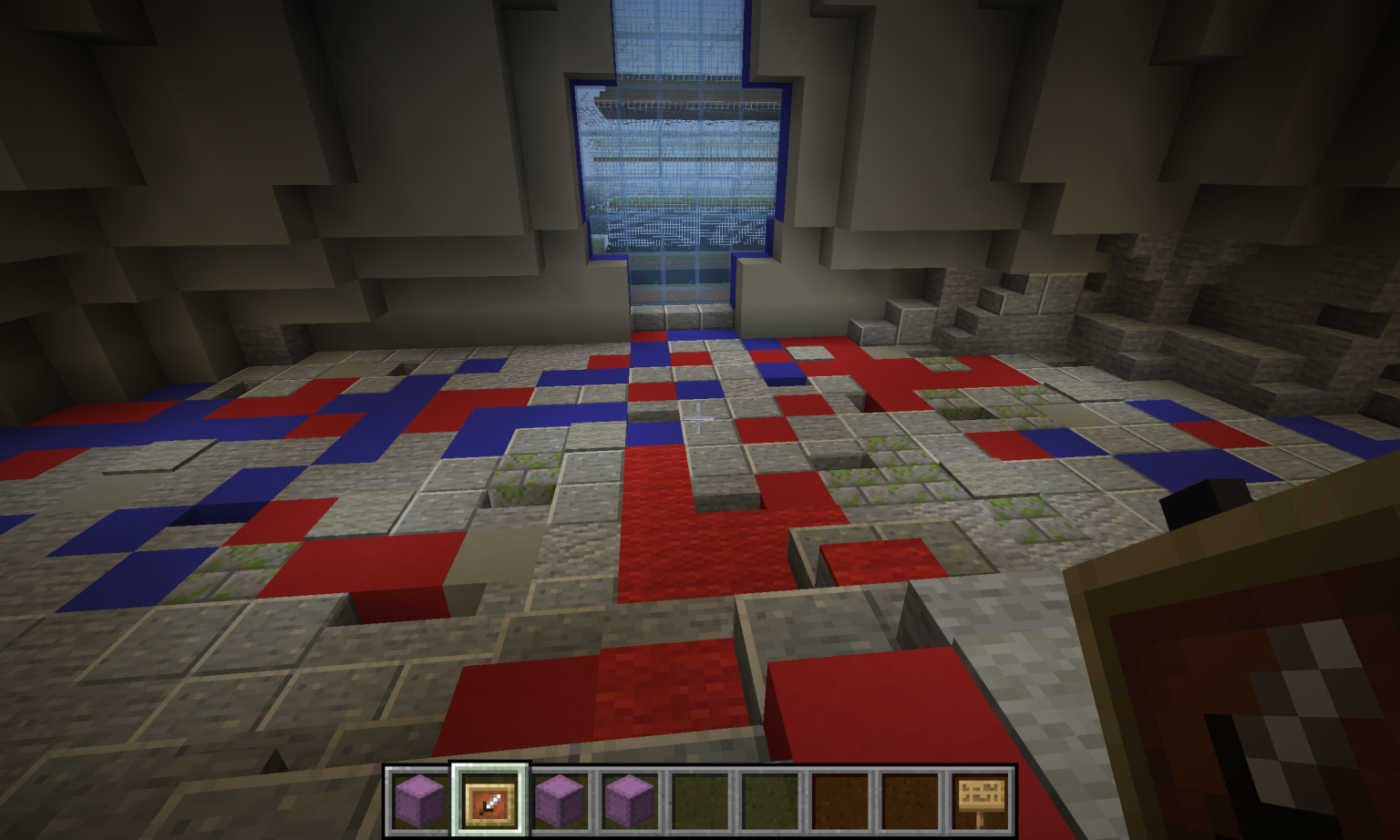Both Sides Now 8 x Leave Your Body: Su Hui-Yu + XTRUS彼岸觀自在8 x 神遊虛擬駐場計劃:蘇匯宇 + XTRUS
In June, the individual artist Su Hui-Yu worked with the 5-member new media art group XTRUX to explore an atypical mixture of Taiwan’s television history, import/localisation of sci-fi, and local ideology in building “Digigrave” in Leave Your Body’s Minecraft world. Digigrave is a spaceship in the shape of a traditional tomb, inspired by Space Warriors – a locally-made sci-fi series in the 80s. The empty space will accommodate content inside, giving the empty grave tomb a new imagination from 2023.
Artist Statement
The Digigrave is a “spaceship”.
A spaceship which offers a different perspective of reviewing ourselves, to escape from those who are addicted to grand narratives of groups, categories, ethics, or families. It looks like a Taiwanese traditional tomb. It’s part of the sci-fi story Space Warriors. According to the story setting, Digigrave carries alien species to come and save the earth. In East Asia, during the last decade of the Cold War from 1984 to 1987, CTS, one of Taiwan’s only three official TV stations at that time, produced and broadcasted a very rare and weird sci-fi series, Space Warriors. It was basically copied from the Japanese series Super Sentai in the late 1970s with modifications. At the same time, it also referenced the Gavan, the follow-up series of Super Sentai, and was mixed with some local elements. CTS eventually discontinued the series due to low ratings, inconsistent production quality, overt criticism from parents, and the import of the Japanese original on VHS and satellite television. Unfortunately, the sci-fi did not open the people’s imaginative thoughts about the universe and the world, but rather, the series, combined with illogical fantasy and Chinese Folktales and even martial arts elements, Confucianism, patriarchy, and other values, which was a very strange and unique experience during that period.
六月期間,藝術家蘇匯宇與五人新媒體藝術團體XTRUX合作,探索台灣電視歷史、科幻文化輸入與本土意識形態,在神遊駐場計劃的Minecraft世界中構建「Digigrave(數位墳墓)」。 Digigrave 是一艘傳統墳墓形狀的宇宙飛船,其靈感來自 80 年代本土製作的科幻系列《太空戰士》。其中空的內部將成為內容的載體,為空蕩蕩的墳墓注入來自2023年的新想像。
藝術家自述
這艘宇宙飛船為我們提供了一個不同的視角來審視自己,讓我們擺脫那些沉迷於群體、類別、道德或家庭等宏大敘事的人。 它看起來就像台灣傳統的墳墓。 這是科幻故事《太空戰士》的一部分。 根據故事設定,數位墳墓攜帶著外星物種前來拯救地球。 在東亞,冷戰的最後十年期間,華視——當時台灣僅有的三個官方電視台之一,在1984年到1987年製作並播出了一部非常罕見且怪異的科幻連續劇《太空戰士》。 它基本上複製自20世紀70年代末的日本特攝系列《超級戰隊》,並進行了修改。 同時還參考了《超級戰隊》的後續系列《加文》,並融入了一些本土元素。 由於收視率低、製作質量不穩定、家長的公開批評,以及日本原版透過錄影帶和衛星電視上引入,華視最終停播了該劇。 遺憾的是,科幻並沒有開啟人們對宇宙、世界的想像,反而這電視劇結合了非邏輯的奇幻和中國民間故事,甚至武俠元素、儒家思想、父權制等價值觀, 成為當時非常奇怪和獨特的經歷。
event details /
彼岸觀自在VIII Both Sides Now 8: Queer Realities/Virtualities
合辦 Co-presenters: Videoclub , Videotage
策展人 Curators: Isaac Leung 梁學彬(HK), Jamie Wyld(UK)
節目伙伴 Programme Partner in HK: Eaton HK
網站 Website:https://both-sides-now.org
